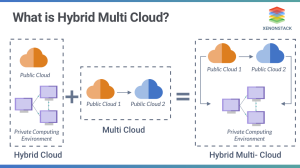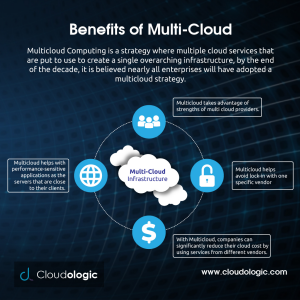Cloud computing has come a long way since its inception in 1997 by Professor Ramnath K. Chellappa. Over the years, it has evolved from being just about the location and contents of hardware racks to managing and scaling resources and distributing workloads. Today, we see a variety of cloud types, ranging from private installations on-premises to hybrid and multi-cloud solutions that span across the edge and traditional data centers.

The Rise of Hybrid and Multi-Cloud Solutions
Hybrid cloud and multi-cloud have gained popularity as businesses realize that certain applications work better in public cloud infrastructure, while others are better suited for on-premises operations. Multi-cloud meets core business needs by preventing single-vendor lock-in and providing a fail-over option. However, it can also lead to unexpected lock-in if not managed carefully. As a result, multi-hybrid cloud, a mix of cloud services running in public cloud operations and on-premise, is becoming the new normal.

U.S. Special Operations Command’s Multi-Cloud Hybrid Strategy
The U.S. Special Operations Command (USSOCOM) is a prime example of an organization adopting a multi-cloud hybrid strategy. This approach gives users greater choices and changes the portion of computing that remains on-premise. The strategy features a blend of robust cloud capability combined with powerful disconnected and edge computing. Many of the missions under USSOCOM’s purview take place in austere locations where broadband communications may be unavailable, making reaching back to commercial clouds impossible.

Benefits of a Multi-Cloud Hybrid Strategy
By creating a multi-cloud hybrid strategy, USSOCOM can offer different types of clouds at different security impact levels, resulting in its components consuming cloud services through an organized set of contracts. Aligning cloud and on-premise services provides three major benefits:
- USSOCOM won’t have to sustain parallel but different computing skill sets.
- Uniformity enhances the ability to deliver effective computing to austere environments.
- Quicker value from any capital expenditures USSOCOM does make.

Conclusion
In conclusion, the world of cloud computing has grown and diversified significantly since its early days. Today, organizations like USSOCOM are adopting multi-cloud hybrid strategies to ensure they have the flexibility, security, and efficiency needed to meet their unique computing requirements. As technology continues to evolve, we can expect to see even more innovative solutions that blend cloud and edge computing to deliver the best possible outcomes for businesses and users alike.